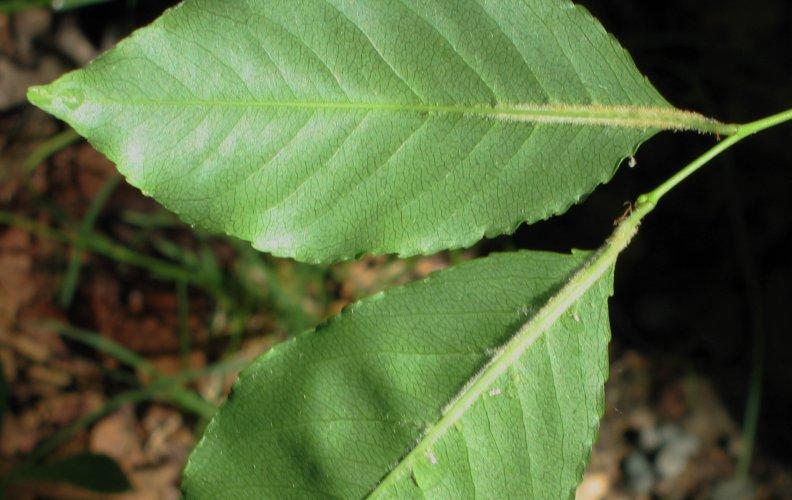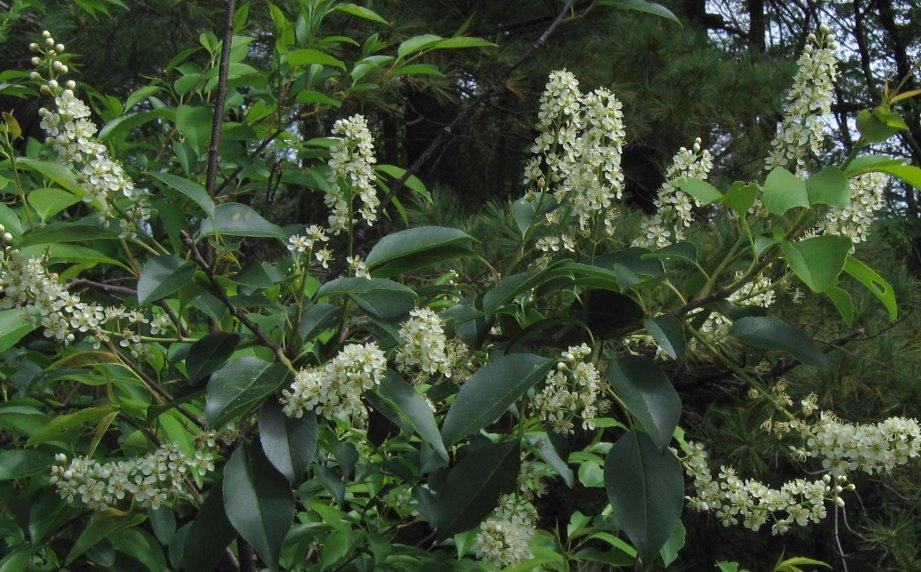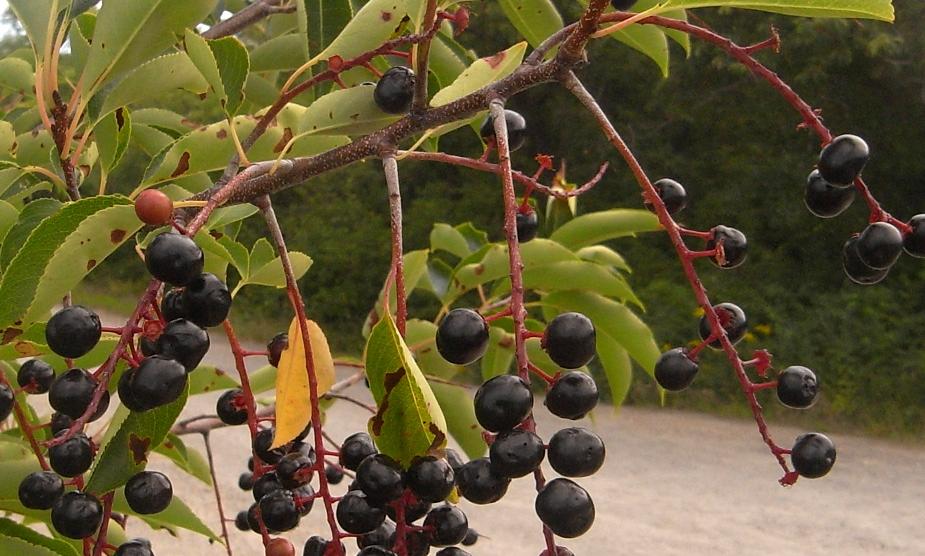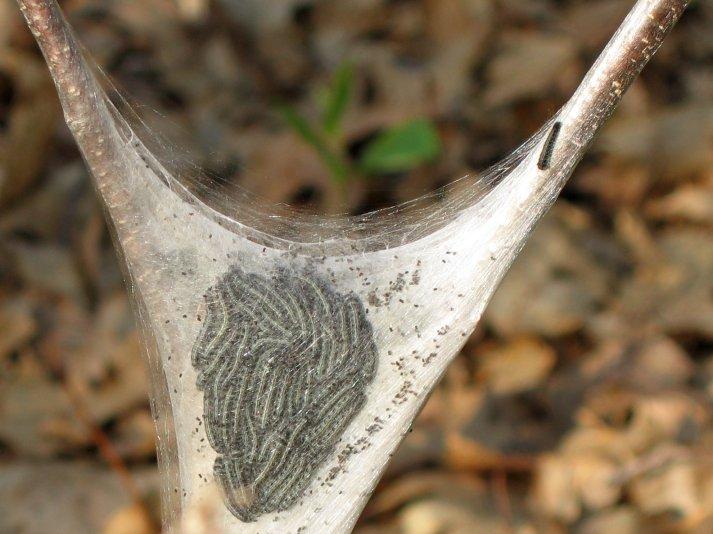Black Cherry
Prunus serotina
Among the cherries of eastern North America, in fact any cherries across the world, black cherry is by far the largest; however,
due to high value of its wood for the furniture industry, the oldest and largest cherry trees have been taken down, so mature
cherries with their black, exfoliating bark are rather infrequent, and the real giants (up to 100 ft!) are now close to impossible
to find. As a shrub or small tree, black cherry remains common in dry oak/hickory/pine woods and elsewhere in the open and
keeps playing an important role as a source of food for a variety of wildlife: many songbirds, squirrels, turkeys, foxes,
mice, and moles feed on its astringent fruit and distribute seeds in their droppings; white-tailed deer and rabbits munch
on seedlings; eastern tent caterpillars defoliate young trees; caterpillars of North America's giant silkmoth (Hyalophora cecropia) also favor black cherry. The Latin epithet "serotina" translates as "late," emphasizing the fact that flowers of black cherry
emerge after the leaves and much later in the season than those of other cherries. Whenever you wish to confirm your identification
of black cherry, just turn the leaf upside down and observe its underside. You would see conspicuous, dense and short reddish-brown
or whitish "woolly" hairs along a part of the midrib.


May 29

August 16

Eastern tent caterpillars on black cherry, May 2